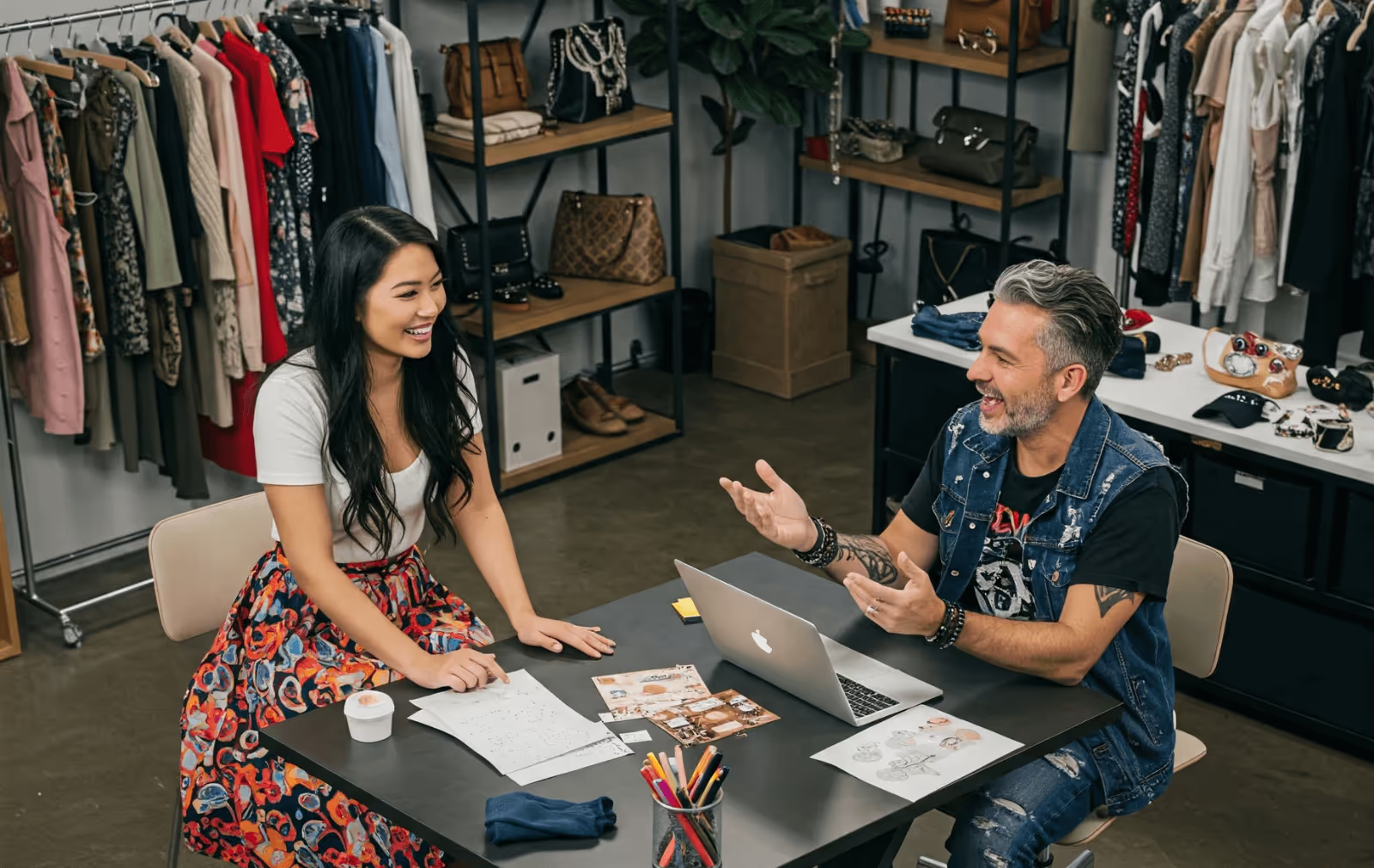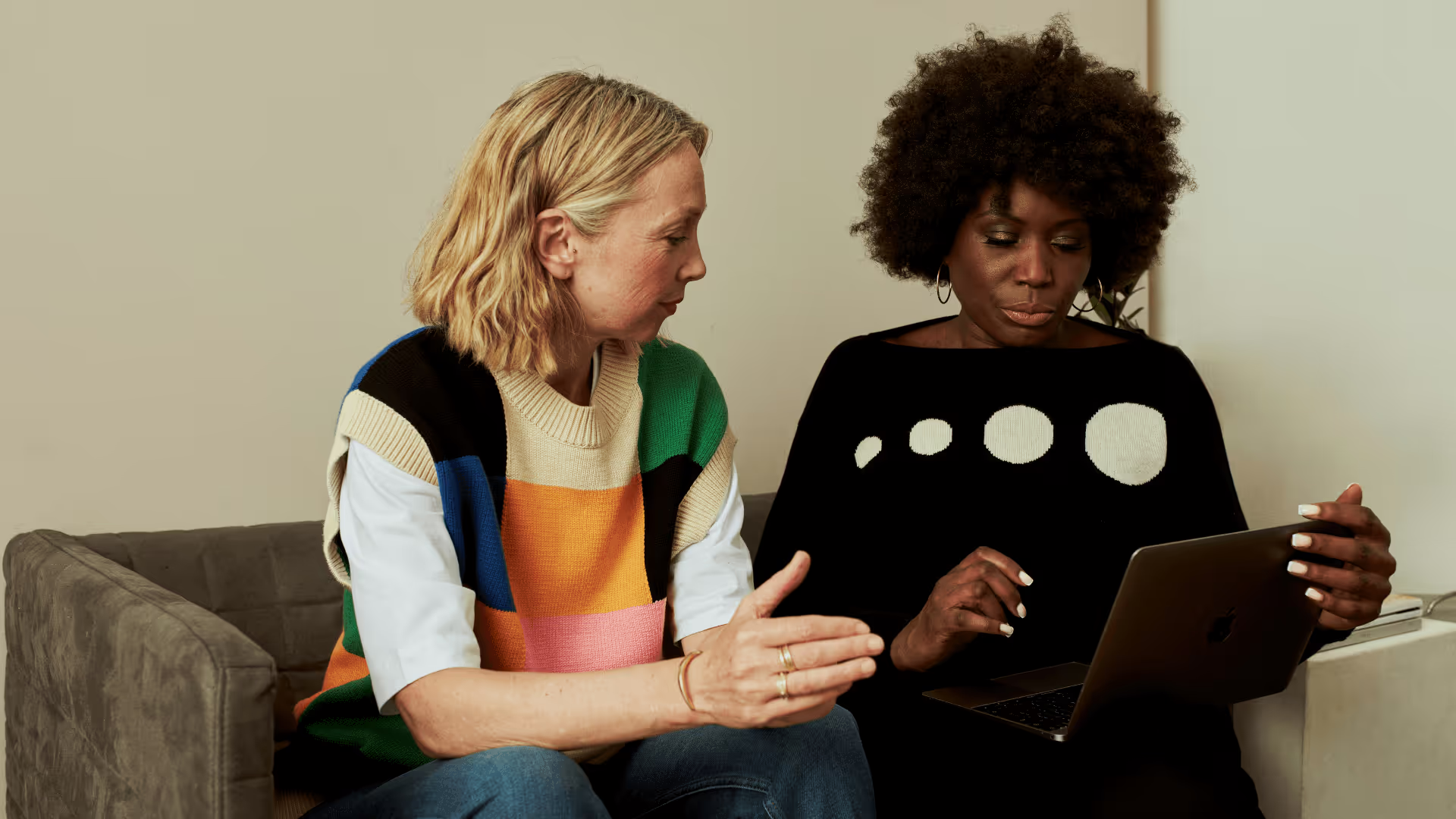How to Pitch to a Fashion Buyer
Uncover how to successfully sell your fashion products to prospective retailers in this step-by-step guide. Here you’ll find everything to include in your wholesale pitch, from your brand story to your linesheets and follow-up strategy.

You’ve managed to score that all-important meeting with your dream retailer, but now you're stuck on how to persuade them to stock your line. This guide will teach you how to pitch your collection successfully to wholesale retailers so you can secure an order and grow your business.
Brief Summary
When pitching to buyers, there are six essential elements a fashion brand should consider:
- Persuasive storytelling: Share your brand’s journey, values, and vision to capture attention early.
- Highlighting competitive edge: Clearly explain what sets your brand apart from others in the market.
- Swatches and samples: Let buyers experience your product quality through curated in-person or digital samples.
- Pricing and marketing strategies: Be ready to discuss margins, MOQs, and how you'll support the brand at retail.
- Effective linesheets: Provide clear, well-organized linesheets with all key product details.
- Brand/buyer relationship building: End with a follow-up plan to show reliability and intent to build a long-term partnership.
All of these factors must be touched upon in any initial buyer meetings for the best chance at growing a long-lasting business partnership.
What Should Be Included in a Pitch to a Wholesale Fashion Buyer?

Instead of following pre-written scripts you might find online, it is most effective to create a custom pitch for each individual retailer you have a meeting with, so you can tailor your presentation to fit their needs. While personalization is important, all wholesale pitches should follow a similar structure and include the six key elements listed below.
A Captivating Brand Story
You should open your pitch to a fashion buyer with a brief overview of your brand and its story so far. Include the ethos of your brand and key information such as the year it was founded, as well as any achievements or notable press features you think the buyer would benefit from knowing.
Try to make the story of your brand sound as engaging as possible and focus on highlighting your creativity by touching on manufacturing techniques, specialist craftsmanship or sustainability efforts your brand utilizes. This opening section of the pitch is crucial to capture a buyer’s attention, so remember to rehearse your brand story well so you talk slowly and clearly but in a way that’s also exciting.
Your Brand’s Unique Selling Point
After you have highlighted the creative elements of the brand, it’s now time to discuss the business benefits of your proposed partnership. What makes you stand out from the competitive set? And why should the buyer partner with you over a competitor? Don’t negatively discuss competitor brands in this part of the pitch, but instead highlight what you do differently and your unique selling point.
Think about why a buyer needs to include you in their assortment and make the benefits clear to them. Is your line similar to what their current customers are already shopping for? Does it offer something new that their current customers have been actively looking for? Or will it bring a new type of customer to their store? Focus on the positive impact your brand can have on a retailer and try to highlight how your brand would help to increase their revenue. ROI is ultimately one of the most important considerations for a fashion buyer.
A Chance To See Your Product

It’s important to give fashion buyers the chance to see your product when pitching. Before you meet with them, make sure to establish which season they will be shopping for next, so you can prepare the appropriate samples.
If you are pitching to a buyer in person, remember to bring swatches and samples so they can feel the product and see how the shades look in real life. Only bring a small selection of bestsellers and current stock for them to view, rather than your entire line, to avoid overwhelming the buyer. Make sure any samples you do bring are of the highest quality and that colors and finishes look the same as how a buyer will receive them in-store.
Pitching digitally has become increasingly popular post-COVID as brands expand globally, and there’s a high chance that many of the meetings you will have with potential buyers will take place online. Virtual showrooms can be particularly useful in this instance as they allow you to showcase high-res images of your product alongside 360° video to help create an immersive experience for the buyer and allow them to see even the smallest details.
Easy-To-Shop Linesheets
Buyers will want to see a linesheet during your pitch to them, and no matter whether this is being shared online or in person, it should include descriptive details about each product, such as style name or number, colors, sizes, materials, and any other relevant specifications.
Break down your collection into clear categories and subcategories so it is easy for a buyer to scan through and find the products that are the best fit for their assortment. Be sure to highlight size inclusivity if that’s something you offer, to let buyers know that you can cater to their retailer's diverse customer base.
Your Brand’s Wholesale Strategy
When pitching to a fashion buyer you need to know your MOQs, wholesale prices and margins inside out so that you can present all of your information clearly and be open to negotiation if required. If your brand currently sells DTC, share sales data if you have it to back up your offerings.
Think about any extras that you can offer the retailer. Is your brand prepared to offer exclusivity or create a limited edition product for their store? If they decide to stock you, what marketing will you do to showcase this? These extras could be the deciding factor when it comes to a retailer choosing a new brand, so try to be open to these additional agreements as much as you can.
Be ready to answer any questions the retailer may have. They are likely to ask you about your payment terms, and if you are a newer brand, they will want to know if you can keep up with demand if your pieces sell out faster than expected. Being honest in your answers is the best way to grow a long-lasting relationship with a buyer.
A Plan For Moving Forward
Close a meeting with a fashion buyer by suggesting an agreed-upon follow-up plan. If they aren’t in a position to place an order immediately following the meeting, let them know the timeframe for when you will be reaching out to check in on them to discuss moving forward together.
Be firm but polite and professional in your approach so that the buyer does not feel any pressure to purchase but understands that you can be proactive about working with them. A fashion brand that can keep good communication with a buyer is always an asset.
In Conclusion

When pitching to buyers, there are lots of elements fashion brands should consider, but with careful consideration, data insights and practice, there is a high chance that a powerful pitch can help you secure more wholesale orders.
Retailers are always on the hunt for newness, with JOOR’s recent Spring Market Survey revealing that 66% of retailers said they are always seeking new resources to add to their assortment. Pitching is a year-round process, and there are always new opportunities for brands to be discovered.
Want help connecting with retailers looking for new business? Schedule a JOOR demo today!

Discover the Top 5 Trends in Wholesale for 2025
Related Insights

Why Digital B2B Catalogs are Essential for E-Commerce Businesses
Online catalogs have become a crucial component for retailers and their buyers in an evermore tech reliant industry. Read about how these dynamic product libraries act as comprehensive selling solutions that plug into current buying behaviors.
%2520(2)%2520(1).avif)
8 Ways a B2B Fashion Marketplace Solves Wholesale Scaling Challenges
Learn how a B2B fashion marketplace like JOOR helps your wholesale fashion brand overcome scaling challenges. Maximize resources, build retailer relationships, and enhance distribution to drive growth in the global wholesale fashion market.
%2520(1).avif)
Price Sheets Vs Line Sheets in Wholesale Fashion
Explore the key differences between price sheets and line sheets in wholesale fashion. Optimize product showcasing and sales strategies with clear pricing details and captivating visuals. Enhance buyer experience and streamline ordering process effectively.
.jpg)
Fashion Buyer Prospecting: Tips That Actually Work
Finding the right retail buyers is a challenge, but with the right strategy you can succeed in wholesale. This guide covers key prospecting tactics such as identifying aligned buyers to optimizing outreach, meaning you can build strong, long-term wholesale partnerships.
.jpg)
Find and Connect with the Right Wholesale Partners Using JOOR Discover
Get to know our new data-driven solution, JOOR Discover, a professional wholesale matchmaking service for global brands and retailers. Learn how to use it to identify beneficial retail connections and build lasting relationships that drive business growth.
.avif)
How Wholesale B2B Marketplaces Help Fashion Brands Find Buyers
Learn the benefits of utilizing a b2b wholesale marketplace that isn't just about transcations, but building lasting relationships and repeat business. Understand more about how b2b fashion marketplaces can help brands looking to scale and build new networks of buyers and connections in other markets.


.avif)